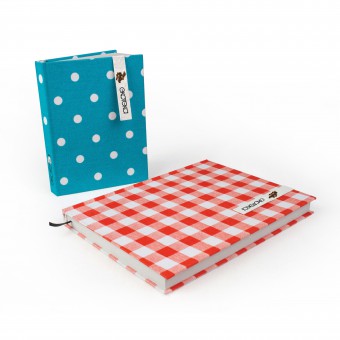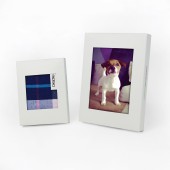Ekoteka Eco notebook by Renato Pongrac |
Home > Winners > #36589 |
 |
|
||||
| DESIGN DETAILS | |||||
| DESIGN NAME: Ekoteka PRIMARY FUNCTION: Eco notebook INSPIRATION: Is assumed that more than one million tonnes of textiles and paper was thrown in landfills each year. A small part is recycled, but too small. By using the combination of waste textile and paper we want to points the innovative approach to the creation of new products. We want products that will be environmentally friendly, whose production and use will be contrary to consumer culture and lifestyle of "buy and throw." UNIQUE PROPERTIES / PROJECT DESCRIPTION: The greatest challenge of our time are climate changes. With project that combines environmental and design we want to point out problems and change the consciousness of society. In this case, the design follows the environmental criteria and is focused on solving environmental issues / problems. Our goal is to provide and encourage social and sustainable development by using recycled materials with a direct impact on the quality of the environment, the production without the generation of waste, optimizing, 100% utilization and the extension lifetime of the product. OPERATION / FLOW / INTERACTION: The focus of innovation is the transformation of discarded textiles and paper, which has environmental and economic benefits. By making 400 copies Eko teka A6, we have saved 136 kg of waste, 20 pounds of CO2, 2,816 liters of water, 200 km car driving, 200 kWh of electricity and 22 kg of wood. With this data and planting spruce, we want to arouse awareness and contribute to preserving the environment, and restore nature confiscated. PROJECT DURATION AND LOCATION: The project started in late 2013 in Čakovec, Croatia and is still in development. Eko teka was presented in June 2014 at the Design Week in Zagreb, Croatia and is listed in the Red Dot 21 global design directory. In November 2014 in Novi Sad, Serbia, under the project Danube PIE, Eko teka will be presented as an example of good practice eco-design. |
PRODUCTION / REALIZATION TECHNOLOGY: Textiles on the cover Eko teka was once overweight and goods intended for the trash. Precisely this textiles are collected and sorted by persons with disabilities in local social cooperative. Book block Eko teka is made from recycled paper and printed with eco paints. Waste paper is collected in a nearby printing house and used to create a label with the seeds of spruce, by manually process of recycling. The packaging is made from recycled paper and can be used as a photo frame. SPECIFICATIONS / TECHNICAL PROPERTIES: Image#1, Eko teka left: width 112 mm, depth 20 mm, height 148 mm Eko teka right: width 152 mm, depth 20 mm, height 200 mm Image#2, Each eko teka is unique Image#3, Product in recycled packaging Image #4, Is designed in a way it has a built thistle and therefore it is reusable Image #5, Plant a spruce! TAGS: reuse, recreate, eco-design, notebook, tree, spruce, eco label, recycled paper, waste textile RESEARCH ABSTRACT: The textile and paper industries are now one of the biggest polluters of the environment. It is not only the production of textiles and paper problem, but also the consumption of textiles and paper, where we produce waste (it is estimated that in Croatia is annually produced 135,000 tons of textile and 120 000 tons of waste paper). The largest source of textile waste are household and the largest source of waste paper are printing industries. The biggest spruce forests in Croatia are on Velebit. Unfortunately, a large part of them die from the disease that experts often associated with acid rain. CHALLENGE: The whole process of work is very challenging because it was necessary to test recycled materials and their interconnection. After some time, through development came the new ideas to upgrade and extend the product life cycle. This concept, through design and connectivity recycled materials actually creates new ideas and a platform for new product development. ADDED DATE: 2014-09-22 22:12:32 TEAM MEMBERS (1) : IMAGE CREDITS: Renato Pongrac, 2014. |
||||
| Visit the following page to learn more: http://www.ekoteka.hr | |||||
| AWARD DETAILS | |
 |
Ekoteka Eco Notebook by Renato Pongrac is Winner in Sustainable Products, Projects and Green Design Category, 2014 - 2015.· Read the interview with designer Renato Pongrac for design Ekoteka here.· Press Members: Login or Register to request an exclusive interview with Renato Pongrac. · Click here to register inorder to view the profile and other works by Renato Pongrac. |
| SOCIAL |
| + Add to Likes / Favorites | Send to My Email | Comment | Testimonials | View Press-Release | Press Kit |
Did you like Renato Pongrac's Sustainable Product Design?
You will most likely enjoy other award winning sustainable product design as well.
Click here to view more Award Winning Sustainable Product Design.








